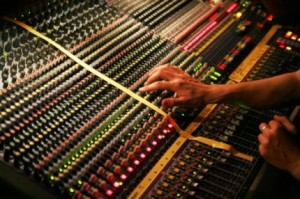Live Sound Monitoring Basics
 In the 60’s, many PA techniques were of high enough quality that companies had unwanted audio system, and normally, started transforming them around to notice themselves better. These old fashioned tracking remedies were the start of an complete industry: an market dedicated to assisting performers notice better. These days, in-ear tracking – the use of small audio system in your reading – has been becoming more popular over conventional keep track of audio system both on level and in house companies. Both provide their pros and cons for Sound Engineers.
In the 60’s, many PA techniques were of high enough quality that companies had unwanted audio system, and normally, started transforming them around to notice themselves better. These old fashioned tracking remedies were the start of an complete industry: an market dedicated to assisting performers notice better. These days, in-ear tracking – the use of small audio system in your reading – has been becoming more popular over conventional keep track of audio system both on level and in house companies. Both provide their pros and cons for Sound Engineers.
Speaker Monitoring
Wedge – or presenter – tracking is the normal for both house companies and stay popular music organizations. In stay audio, the pitching wedges are fed from either a individual keep track of panel, which requires a divided from the level and makes a personalized made mix for each artist, or fed from the additional delivers of the front-of-house audio panel. Monitor pitching wedges are often very loud; they’re acknowledged with being one of the factors operating performers have to be so careful about their reading health. The benefits to pitching wedges are very crystal obvious — a lot of performers desire pitching wedges because it allows them to type a personalized made hearing atmosphere that features not only the pitching wedge and the mix returning from it, but their instrument amps and the re-verb of the room. However, most audiologists agree: the loudness of pitching wedges is bad for your reading. Wedge tracking is also difficult for operating companies who have to provide their own PA systems; the techniques are hefty and need a lot of installation time.
In documenting companies, presenter tracking is the normal. It’s complicated to get a excellent mix on headsets unless they’re very smooth and precise. Speaker tracking is also the best way to see what a mix will audio like on a wide range of techniques.
In-Ear Monitoring
In the beginning of in-ear tracking, designers like Marty Garcia at Upcoming Sonics were placing share Panasonic headsets in raw ear-molds attached to hard-wired amps. Now, 20 decades later, we have incredibly complicated in-ear systems; custom-molded earpieces with two or three audio system in each (to manage the mids, peaks, and amounts separately) are becoming the normal, and many in-ear screens are making use of normal techniques into their earpieces to decrease the discovering challenge on in-ears. In-ear tracking has several benefits, the biggest being reading preservation. Reducing yourself off from noisy level pitching wedges is a strategy, as you can control your amount and mix as you want it without difficult.
The negatives are, amazingly, just like pitching wedge monitoring: sometimes audience members force the in-ears higher than they should, losing that by doing so they can hit the same audio demand amounts as pitching wedge screens. Moreover, a lot of designers can’t get used to the privacy, which can be combated by using normal mics on level.
